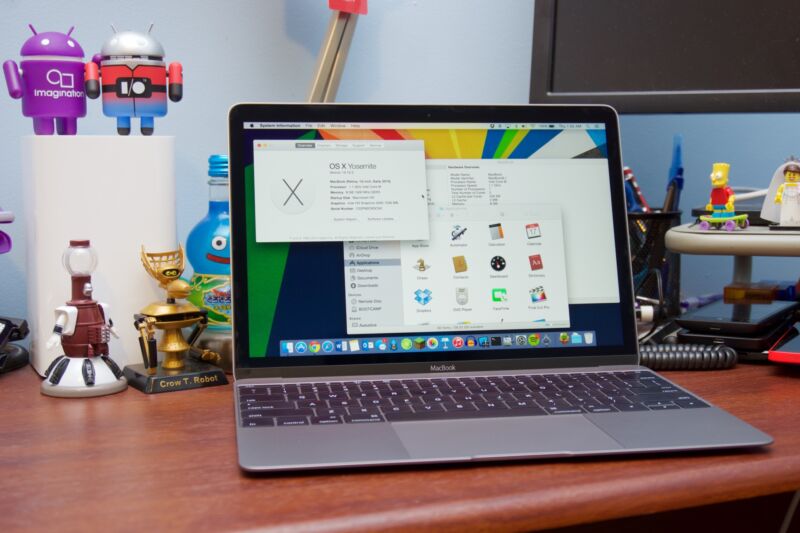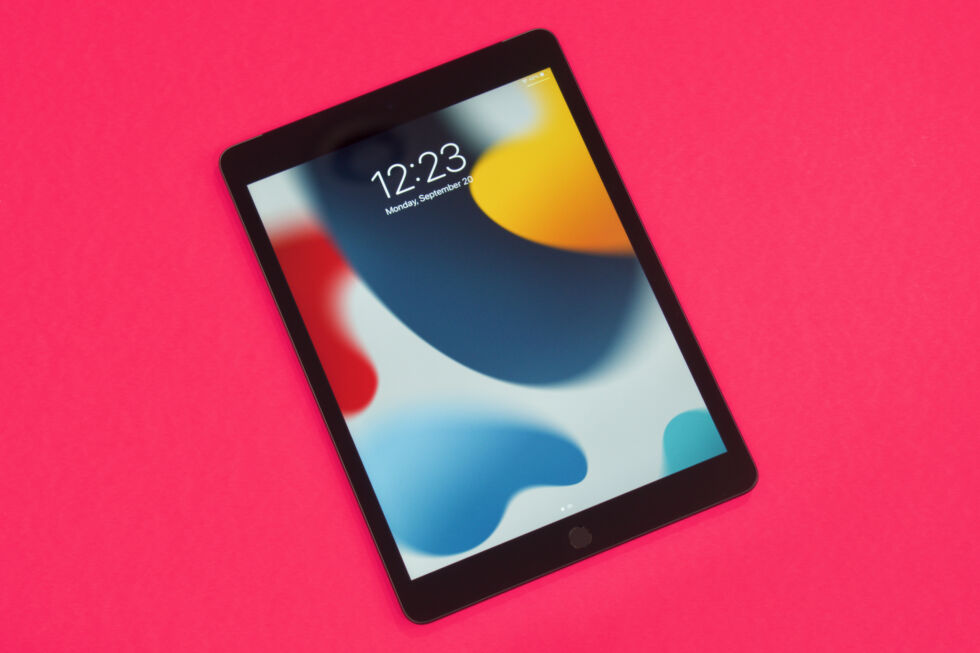
Andrew Cunningham
If you want a Mac laptop, you usually need to be ready to spend at least $1,000. Whether we’re talking about the white plastic MacBook from 2006, the 11-inch MacBook Air from a decade ago, or the modern M1 MacBook Air, the list price for Apple’s cheapest MacBook is usually within $100 or so of that four-digit price barrier (not counting refurbished Macs or ones that go on sale).
Apple has a stated aversion to releasing less-expensive hardware just to hit an attractive price—”cheap is for other people because we try to build a better product,” Apple marketing SVP Greg Joswiak told us a few years ago. But rumors of a low-cost MacBook pop up every few years, undeterred, usually conflating “entry-level” with “low-cost.” Here’s a prediction about an $800 MacBook from October 2008 (actual entry-level prices: $999 and $1,299). Here’s analyst Ming-Chi Kuo and Bloomberg’s Mark Gurman in 2018 predicting a MacBook Air “with a lower price tag” that would “reignite sales” (actual price: $1,199, $200 more than the previous MacBook Air).
This week, Kuo came back with an updated version of that same report, claiming that Apple “may also consider (but hasn’t decided yet) introducing a more affordable MacBook model to boost shipments.” Mac revenue and unit shipments have indeed been down year-over-year for a few quarters, though that has more to do with a pandemic- and Apple Silicon-fueled sales spike in 2021 and 2022 than anything (the revenue numbers are still on the high side of normal compared to 2019 and most of 2020).
Let’s assume, for the sake of argument, that Apple follows through with this decision and that Kuo is correct in characterizing this new MacBook as “more affordable [than current offerings]” rather than “an all-new offering in the same price window that entry-level MacBooks have occupied for years.”
A cheaper MacBook—call it a $600-to-$800 price window, like Microsoft’s Surface Laptop Go and some of the better “Chromebook Plus” laptops that Google just announced—arguably makes more sense now than it has at any point in the recent past. That’s partly because of Apple Silicon, partly because Apple keeps purpose-built entry-level products in most of its other lineups at this point, and partly because of how Apple’s business has shifted in the last few years.
Apple knows how to do a less-expensive product

Andrew Cunningham
Consider the $429 iPhone SE. It’s clearly lesser than the “regular” iPhones, with its smaller screen, shorter battery life, and barebones camera setup (to the couple of people who email me about Touch ID every time I knock the nine-year-old SE design, your objection has been noted). It’s also clearly more expensive than what passes for a budget phone in Android land, where competent-if-unexciting brand-name options can be had for $200 or less.
And yet to the cash-strapped phone buyer, it offers most of the key features of an iPhone, starting at around half the price of the iPhone 15, the current mainstream flagship. It’s positioned in a way that allows it to provide the iPhone experience while minimizing how much it cannibalizes sales of more expensive versions.
Products like this exist in a couple of other places in Apple’s lineup. The most prominent is the $329 iPad, which despite its age still does the most important iPad things at around half the price of an iPad Air (this is also true to a lesser degree of the oddball $449 10th-gen iPad). The basic $599 Mac mini also arguably occupies this position in Apple’s desktop lineup, relative to the $1,299 iMac, the $1,299 M2 Pro Mac mini, or the $1,999 M2 Max Mac Studio.
So in a way, the MacBook is actually an outlier in Apple’s lineup, the only one of its major product lines where there isn’t some kind of workable option well under $1,000.
Another important thing about those cheap iPads is that buying one plus a first-party keyboard case costs between $500 and $850, roughly the same range we’re targeting for our imagined low-cost MacBook. And because the iPad and Mac remain so distinct even after years of drifting closer together, those iPad-laptops aren’t automatically serving the same people who would be served by a Mac laptop in the exact same price range.
So Apple “[doesn’t] do cheap,” as Joswiak told us. But that doesn’t mean it’s totally incapable of delivering a meaningfully less-expensive product that still meets its standards for design quality, software experience, and profit margin.

